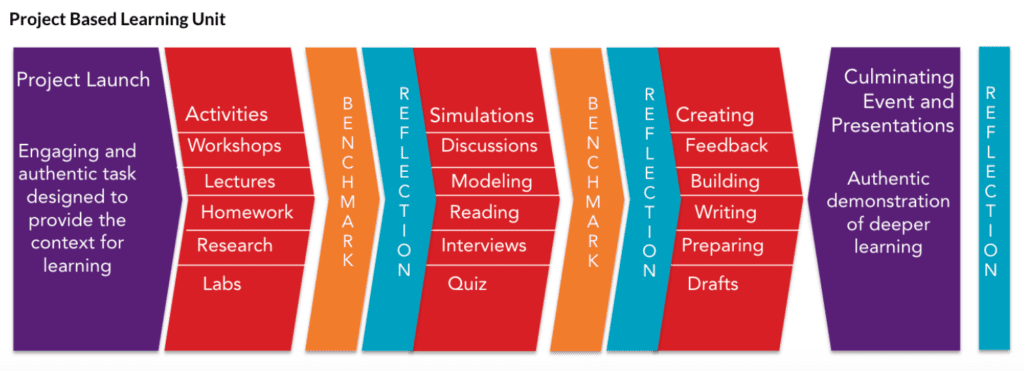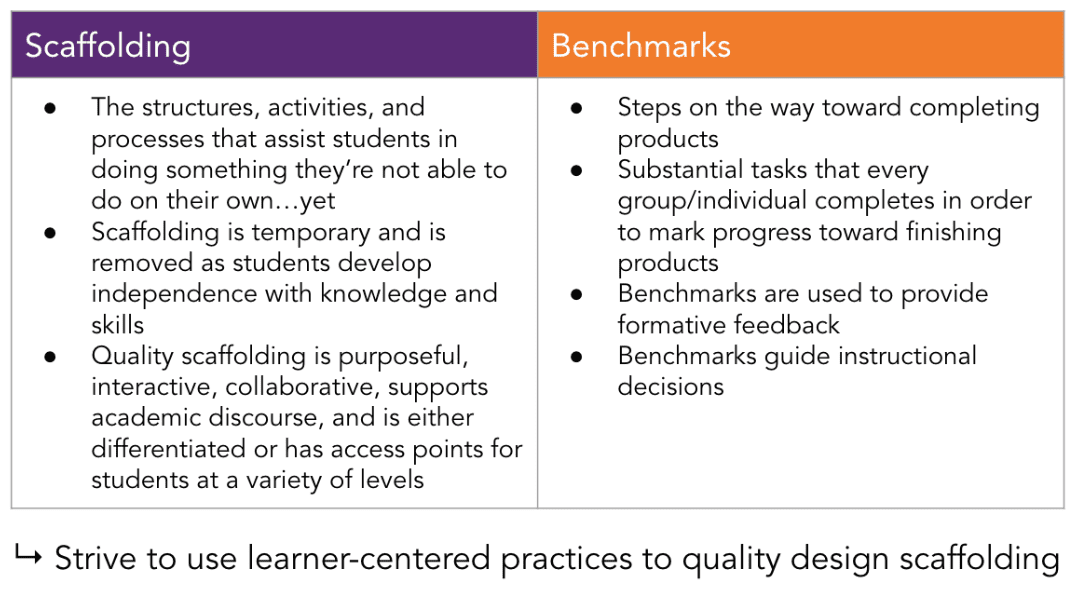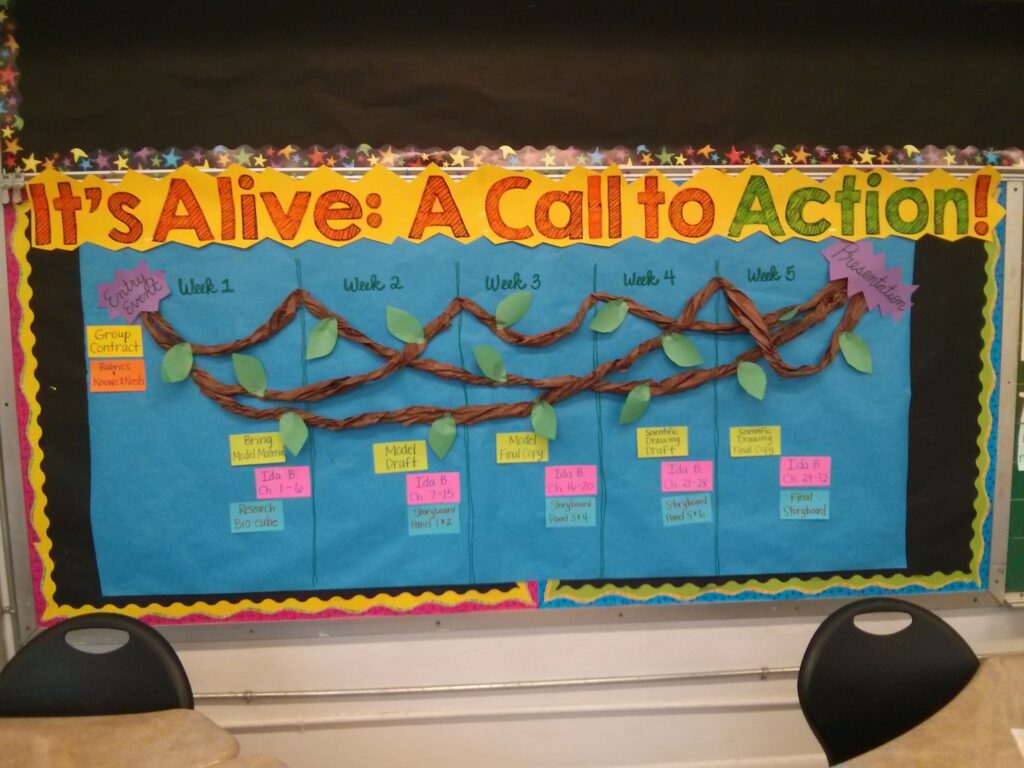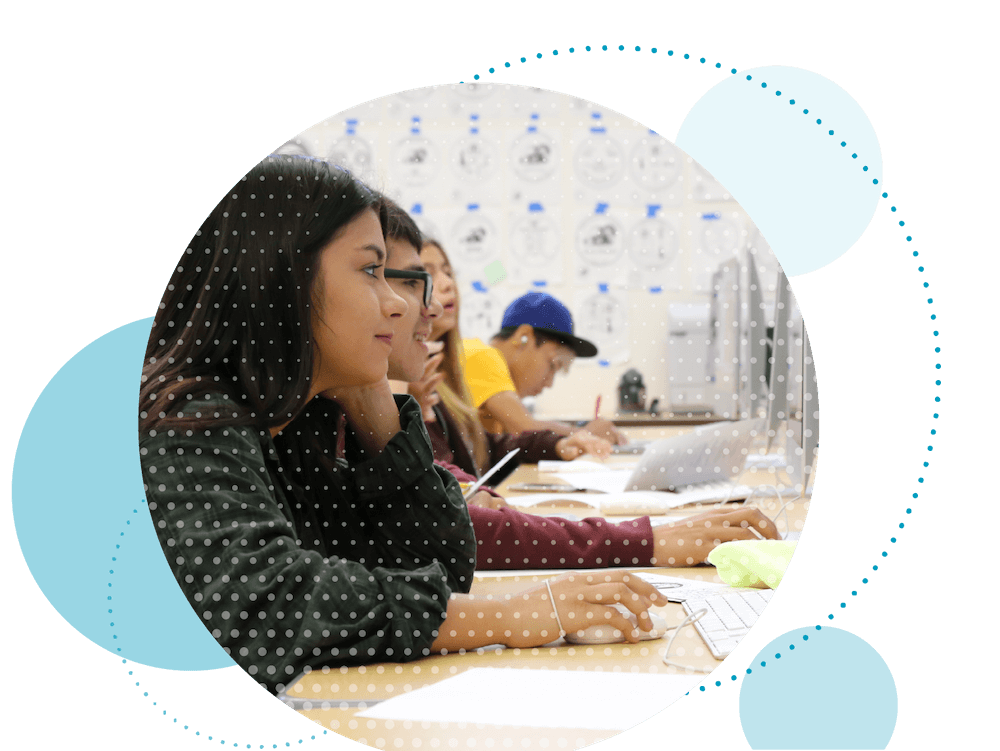Our Network
Resources and Tools
Scaffolding in Teaching: Supporting Student Success Through Project-Based Learning
What is Scaffolding in Teaching?
Have you launched a project and noticed some students struggling to keep up with new content or skills? How do you adjust and monitor learning in real time to ensure that every student gains the knowledge and skills necessary to successfully complete a project? Most often the answer is that your students need more scaffolding. Scaffolding in education is an instructional structure or set of processes that help students gain knowledge and skills they have not yet mastered. It often involves a series of interconnected tasks, building upon one another, designed to help students gain proficiency in concepts, skills or content. Much like scaffolding used in construction, scaffolding to improve learning is designed to be temporary, gradually removed as students learn content and skills.
Effective scaffolding not only equips students with the tools they need to succeed but also builds their confidence, encouraging them to tackle more challenging tasks as they progress. Teachers should continually assess and adapt these strategies to align with the evolving needs of their students.
The Role of Scaffolding in Project-Based Learning (PBL)
Project-Based Learning (PBL) involves students collaboratively solving complex, real-world problems. Scaffolding in PBL temporarily supports students as they build the skills and knowledge needed to complete the project. PBL educators planning a project should consider three areas of student support:
- What content will students need to know to complete the project and demonstrate mastery of the standards? How will they become proficient? How will you know?
- What skills (e.g., presentation skills, web design, collaboration skills, etc.) do you want students to develop throughout this project, and how will they practice those skills?
- How will students work together to manage and complete the project, and what structures will help to guide this process?
The image below outlines the project process from the beginning with a project launch (denoted in purple), scaffolding in the middle (red), and the culminating product and reflection at the end. An effective scaffolding strategy in PBL starts with introducing Knows and Need-to-Knows (K/NTKs) during the project’s entry event or launch (purple). The K/NTKs list requires students to use prior knowledge to create a list of “knows” on the topic related to the project’s driving question and launch and asks them to think critically about what they will “need to know” to solve the problem. This list of need-to-knows becomes the educator’s guide to instructional scaffolding during the project process.

Each of the Scaffolding activities (red) should be in response to student inquiry. PBL educators revisit these questions regularly to track progress and connect daily tasks with overarching project goals. This iterative process fosters sustained inquiry and reinforces the relevance of each activity. Scaffolding can take the form of a teacher providing support by hosting small group workshops or students engaging in whole class socratic seminars, independent research, learner-centered activities, lab investigations, formative assessments, and more.
Each task and activity builds upon the previous one, providing a clear pathway to success while maintaining the flexibility to address individual needs. To read more about Project-Based Learning visit The Comprehensive Guide to Project-Based Learning and What is Authentic Project-Based Learning?
Implementing Scaffolding Strategies in PBL
Project Benchmarks: Chunking Project Tasks
Breaking projects into distinct phases or Benchmarks (seen in orange in the image above) makes the project process less overwhelming and helps students track their progress and supports them in acquiring project management skills. After each benchmark, students should be given time to reflect on their individual goals as well as their team goals. Scaffolds aligned to benchmarks are designed to build on each other to support project teams towards the culminating final product, enabling educators to:
- Check for understanding
- Provide timely feedback on student work
- Encourage individual and group reflection on goals
- Support teams in progressing toward the final product

Benchmarks also reinforce learning by emphasizing connections between activities and the broader project goals. After achieving a benchmark, students might reflect on their progress, identify areas for improvement, and adjust their strategies accordingly. Scaffolds are the day-to-day tasks that build to each benchmark in a project. The table above helps to distinguish the difference between the two and how they are also connected.
Providing Scaffolded Resources
Student-centered resources such as graphic organizers, sample outlines, and learner-centered practices can offer initial support as students learn a new concept or connect to students’ prior knowledge. Over time, educators may gradually reduce these supports, encouraging students to work independently. Examples of learner-centered practices that can be used to scaffold learning include:
- Chalk Talk: Allows students to articulate, expand on, and revise their knowledge, allows students to share ideas and brainstorm and use written communication skills to connect with and gain deeper understanding of a topic from each other.
- Card Sort: Is a hands on way to give space for students to provide their own reasonings, promotes self assessment and can also serve as a formative assessment. It can be used to support students in connecting to something they already know or to introduce a new concept or skill.
- Four Corners: Is an interactive way to respond to questions that involve movement. This practice promotes collaboration, peer discussion and can be used to support students in connecting to prior knowledge or to introduce a new concept or skill.
By using a variety of scaffolding tools, teachers create a structured yet flexible learning environment that supports student growth and autonomy. To understand more about learner-centered practices read: How to Implement Student-Centered Learning Strategies in the Classroom.
To download a sample NTN Practices Cards for a variety of scaffolding strategies like Chalk Talk and Card Sort click here.
Effective Techniques for Scaffolding in Project-Based Learning

Setting Clear, Achievable Goals
Creating project benchmarks is an effective way to break up learning into chunks and enables students to experience measurable progress toward their final product.
Using visual benchmarks in the classroom also models for students how to effectively manage a long-term project in both content and process.

Utilizing Peer Scaffolding
In PBL, collaboration among students is a necessity as it allows them to support each other, leveraging diverse perspectives and skills. Peer supports might include asking students:
- To design and lead workshops for the rest of the class
- To provide peer review on writing assignments
- To demonstrate how to solve problems in math or physics
Asking students to share their expertise allows other students to learn new skills within their zone of proximal development. This approach not only enhances learning but also fosters a culture of community and belonging within the classroom.
Adapting Scaffolding to Diverse Learning Needs
It can be helpful to start with a list of necessary accommodations and modifications so you have those in mind as you begin designing your project and scaffolds. Even better is if the project planning is a joint endeavor between you and the Special Education or ELL teachers. It can also be helpful to have a particular student in mind as you think about the scaffolding necessary for the project. What would that student need to be successful at every stage?
- How will you support that student during the entry event? Will they need any additional support with the reading materials, content, or process?
- How will you support that student throughout the project, as you scaffold based on students’ need-to-knows? When you are planning activities, workshops, readings, labs, etc., what accommodations or modifications will be necessary?
- How will you support that student as they work with their group?
- What additional supports, accommodations, or modifications might be needed for assessments and the final product, including the presentation?
A few specific ways to scaffold for diverse learners are:
- Have students preview the entry event with the Special Education teacher so they can receive extra support with the reading and difficult vocabulary
- Plan to do extra workshops with particular students based on their needs
- Provide differentiated readings or materials for students, delivered individually via an online platform
- Provide extra support for a student who needs to complete their part of project work or model and support group communication and project management skills.
All students must feel supported and included. They must feel safe in the idea that their voice matters and they can contribute to the overall community. This type of culture is foundational so that students can embrace equitable collaboration, discourse, and higher order thinking that they are asked to do in a PBL environment.
Continuous Assessment and Feedback
Frequent formative assessments and ongoing feedback are crucial in guiding students through each benchmark in the project process. PBL prioritizes asset-based feedback to further build on learner strengths and support growth in critical thinking skills over time.
In a student-centered environment, all students take an active role in their own learning. This takes on many forms including allowing students to give and receive feedback so that reflection and revision on their work can occur. PBL uses assessment to inform instruction and emphasize learner growth and intrinsic motivation. Two examples of NTN’s Assessment Practices used to scaffold are:
Running Rubrics: Using a rubric to capture conversations about progress helps students understand the criteria for the task and what next steps they might take so that they take charge of their own learning. Running Rubrics also help students who are working towards mastery take action on feedback in a project or assignment.
I used to think…Now I think: A formative assessment that helps students reflect on their thinking about a topic and explore how it has changed and encourages students to develop their reasoning abilities.
These practices along with other scaffolds teachers can use can be downloaded here in our sample NTN Practices Cards deck.
Benefits of Scaffolding in Education
Increased Student Confidence and Engagement
By breaking down complex tasks, scaffolding makes the project process less intimidating, helping students feel capable of tackling the hard work of getting to the culmination of a project.
Deeper Comprehension and Retention
Scaffolding encourages students to understand and retain new information, enhancing long-term understanding. The gradual release of responsibility enables students to internalize concepts at their own pace.
Development of Problem-Solving Skills
Through the scaffolding process, students learn the skills of how to approach and solve a problem while working through challenges independently.
Challenges and Solutions When Using Scaffolding in the Classroom
One of the challenges of scaffolding in PBL is finding the balance between too much or too little support for students through the process. Over-scaffolding can hinder student independence and motivation, while under-scaffolding may leave students feeling lost. To strike a balance, educators should:
Deploy scaffolds as needed and remove them gradually. Scaffolding is a temporary structure and students should have voice and choice in the amount of support they receive.
Ensure tasks are interactive, fostering active sense-making and student discourse.
Encourage self-reflection and ownership to build agency. Including regular reflection after each benchmark helps students identify their areas of growth and gives them time to celebrate achievements.
An example of removing scaffolding as students gain skills is when a teacher may initially provide detailed project calendars to support project teams through the project process and later allow students to create their own project calendars and project management tools.
Final Thoughts on Scaffolding in Project-Based Learning
Scaffolding is a must in well-designed project-based, problem-based and inquiry learning and evolves as students’ needs change. It is an ongoing process, that adapts to the students’ growth over time. By fostering independent thinking and real-world problem-solving skills, scaffolding improves learning experiences, preparing students for success in PBL. Educators should be mindful of designing quality scaffolding and benchmarks in the planning stages of project-based learning to ensure successful teaching and learning in the PBL classroom.


